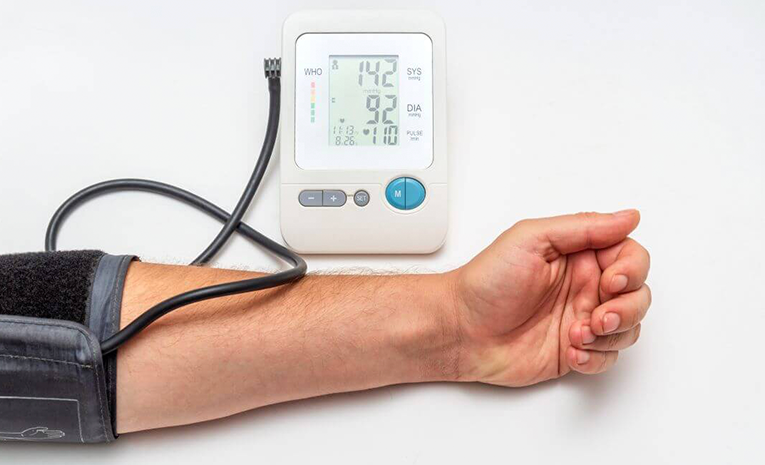Keep your heart in rhythm and your blood flowing smoothly with our herbal formulas for a healthy circulatory system. Prioritize cardiovascular wellness and maintain optimal blood pressure naturally.
Introduction
Circulatory diseases are the leading cause of disability and death worldwide. Each year, cardiovascular diseases, stroke, diabetes, and renal conditions cause more than 17.9 million people, accounting for an estimated 32% of all deaths in the world.

What exactly is the circulatory system?
The circulatory system is made up of your blood vessels and heart. Your heart circulates blood throughout your body via a system of veins and arteries (blood vessels). The circulatory system is also referred to as the cardiovascular system.
Role of the circulatory system in your body
The key function of the circulatory system is to transport blood around the body. The cardiovascular system also assists your body in eliminating waste. This waste consists of:
- Carbon dioxide is produced by breathing.
- Chemical byproducts of your organs.
- Waste from food that you consume.
Behavioral risk factors: Which habits of yours can cause trouble?
An unhealthy lifestyle, lack of physical activity, tobacco use, and harmful alcohol use are the most important behavioral risk factors for heart disease and stroke. Individuals may experience elevated blood pressure, elevated blood glucose, elevated blood lipids, and obesity as a result of behavioral risk factors.
Signs and symptoms of suffering from a heart disease
Often, there aren't any indicators of the underlying blood vessel disease. A stroke or heart attack could be the first indication of underlying disease.
Symptoms of a Heart attack include:
- Discomfort in the chest area.
- Discomfort in the arms, left shoulder, forearms, jaw, elbows, or back.
- Breathing difficulties or breathlessness, vomiting, or nausea, light-headedness, skin becoming pale, and cold to touch.
A stroke's most common symptom is the unexpected weakness of the face, arm, or leg, usually on one side of the body.
Other symptoms include the sudden onset of:
- Numbness of particularly on one side of the body.
- Confusion and incoherent speech.
- Inability to see with one or even both eyes.
- Facing difficulty in moving about, giddiness, and/or loss of balance.
- A severe headache without any cause; and/or dizziness or unconsciousness.

Other cardiovascular disease
Arrhythmia: A malfunction in your heart's electrical conduction system that can result in irregular heartbeats or heart rates.
Valve disease: Characterized by tightening or leaking of your heart valves.
Coronary artery disease: A disease affecting the blood vessels in your heart, causing blockages.
Heart failure: Occurs when there is a problem with the heart's pumping and relaxing functions, which causes excess fluid buildup and breathing difficulties.
Peripheral artery disease: Refers to problems with the blood vessels in your arms, legs, or abdomen, such as constriction or blockages.
Aortic disease: Dilatation or aneurysm of the large blood vessel which directs blood from the heart to the brain and the rest of your body.
Congenital heart disease: A heart condition that you are born with that can affect various parts of your heart.
Pericardial disease: A problem with your heart's lining, including pericardial effusion and pericarditis.
Deep vein thrombosis (DVT): A blockage in your veins, which are the vessels that return blood from the brain/body to the heart.
Now that we know about all the major illnesses that could affect our hearts, how do we make sure to stay away from them? Here’s how.

What precautions should you take to make sure your circulatory health is maintained?
- All tobacco products must be avoided.
- Other medical problems, including Type 2 diabetes, high blood cholesterol, or high blood pressure, must be managed.
- Maintaining a healthy body weight.
- Exercising for at least 30 to 60 minutes.
- Stress reduction and management.
Way to have a healthy heart? Food, of course!
Food is a major part of our lives, so naturally, what we eat has an impact on our bodies. Consciously making changes in your diet, and selecting healthy ingredients while making meals will benefit you in the long run.
Limit your portion size - To help you control your portions, use a small plate, or bowl. Consume fewer high-calorie, high-sodium meals, such as refined, processed, or junk foods.
Include vegetables and fruits -
| Include | Avoid |
|---|---|
| ● Vegetables like Greens, broccoli, cauliflower, peppers, etc., since these are low in sodium. | ● Fried food, coconut. |
| ● Fruits such as Berries, apples, bananas, pears, etc. | ● Fruit canned in a thick syrup. |
| ● Fruit that has been frozen and sugared. |
Whole grains - Whole grains are high in fiber and other nutrients that help regulate your heart's health.
| Include | Avoid |
|---|---|
| ● Whole-wheat flour | ● Biscuits |
| ● Bread made from whole grains, preferably 100% whole wheat bread or 100% whole grain bread | ● Cakes, and pies |
| ● High-fiber cereal with at least 5 g of fiber per serving | ● White, refined flour |
| ● Brown rice and barley are examples of whole grains. | ● White bread |
| ● Popcorns | |
| ● Muffins, and waffles |
Avoid trans fats - Restricting your intake of saturated and trans fats is an important step toward lowering the risk of coronary artery disease.
| Include | Avoid |
|---|---|
| ● Olive oil, vegetable, and nut oils. | ● Cocoa butter |
| ● Nuts, seeds, and avocados. | ● Oils from coconut, palm, cottonseed, and palm kernel |
Limit the intake of sodium - Restricting salt (sodium) is an essential component of a cardio diet. A healthy adult should consume no more than 2,300 mg of sodium per day (a teaspoon of salt).

Put your heart into exercising
Physical activity is a major step towards a better heart.
- Aerobic exercises – Running or brisk walking, cycling, playing sports, and swimming. Doctors advise at least 150 minutes of moderate activity per week, which includes heart-pumping aerobic exercise.
- Resistance training – Exercising with free weights (such as dumbbells, or barbells), on weight machines, with resistance bands, or via body-resistance exercises such as push-ups, chin-ups, and squats can assist people who have a few extra kgs in not only maintaining a healthy heart but also taking care of the body weight.
- Flexibility and balance – Yoga and Tai chi are two other activities that can promote your musculoskeletal health by keeping you flexible and free of joint pain and other muscular issues.
Conclusion
Circulatory system diseases have a wide range of effects on your body and life. That is why it is critical to educate yourself on common medical conditions. Be aware of the typical symptoms and red flags so that you can seek assistance as soon as possible if necessary. You never know when a seemingly minor detail will save someone's life.
References
- Part 2: The global burden of circulatory disease. World-heart-federation.org. [cited 2022 Dec 21]. Available from: https://world-heart-federation.org/wp-content/uploads/2021/04/White-Paper-for-Circulatory-Health.pdf
- Circulatory System. Cleveland Clinic. [cited 2022 Dec 22]. Available from: https://my.clevelandclinic.org/health/body/21775-circulatory-system
- Cardiovascular diseases. Who.int. [cited 2022 Dec 22]. Available from: https://www.who.int/health-topics/cardiovascular-diseases
- Cardiovascular Disease. Cleveland Clinic. [cited 2022 Dec 22]. Available from: https://my.clevelandclinic.org/health/diseases/21493-cardiovascular-disease
- Heart-healthy diet: 8 steps to prevent heart disease. Mayo Clinic. 2022 [cited 2022 Dec 22]. Available from: https://www.mayoclinic.org/diseases-conditions/heart-disease/in-depth/heart-healthy-diet/art-20047702

